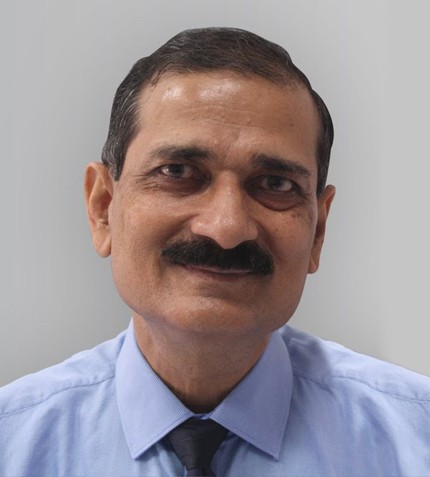
"In addition to pharmacy graduates, the pharmaceutical industry requires support from other industries like chemicals and petrochemicals, as well as top quality pharmacy machinery manufacturers. In Gujarat, we have all of this."
Dr. Hemant Koshia
COMMISSIONER, FDCA (FOOD AND DRUG CONTROL ADMINISTRATION) GUJARAT
What role does the FDCA play within India’s pharmaceutical industry?
The FDCA enforces the Drugs and Cosmetics Act and the Food Safety Act to ensure that companies in Gujarat are manufacturing safe food and pharmaceutical products. Our state is recognized for having the highest quality standards in India, and I attribute this to the awareness and strength of my team of 1,500 members. The FDCA runs several training programs with stakeholders for better compliance. I find it important to interact personally with the managing director of a company to make sure his or her motives are in alignment with the motives of the pharmaceutical industry, which is to provide safe and effective treatments to patients. It is these personal relationships that ensure we are able to consistently maintain excellent quality standards across the board.
How does the administration make effective use of innovative technologies?
To expand the FDCA’s oversight requires resources. The government is not always in favor of providing us with more manpower, and it is far more willing to provide technology and machinery. As commissioner, I scan the latest technologies available globally that I can bring to Gujarat, and this has helped us respond to market needs more effectively. As an example, when Covid-19 broke out, the demand for injectables surged. The standard test for these takes 14 days because a colony of bacteria is only visible under a microscope after that time frame. With our rapid microsystem, the FDCA in Gujarat could ensure product quality within three hours, and we could run 60 batches in the same machine. As a result, we could run far more tests at a faster rate, making products available earlier to patients when there was a dire demand.
What makes Gujarat so successful at creating robust pharmaceutical companies?
In Gujarat, we have over 5,000 licensed manufacturers, over 3,000 of which manufacture allopathic drugs. There are many Gujarati MNCs that started small-scale and grew impressively such as Zydus Cadila. These companies are led by technocrats with a quality-first mindset. Part of the reason Gujarat is home to such successful companies is because it is home to India’s first pharmaceutical college, which was established in Ahmedabad in 1947. Now in Gujarat, we have over 65 pharmacy schools.
In addition to pharmacy graduates, the pharmaceutical industry requires support from other industries like chemicals and petrochemicals, as well as top quality pharmacy machinery manufacturers. In Gujarat, we have all of this. We also have the printing, packaging, and transportation infrastructure in place to support the pharma sector as it grows.
How does the FDCA assist medical device companies in navigating the shifting regulatory framework?
India has a categorization of medical devices, with categories A and B being lower risk, and categories C and D considered higher risk. Gujarat has several medical devices companies that fall into different categories. As these rules evolve, the FDCA acts as a facilitator in helping these companies to make sure they are complying with the updated framework.
Looking ahead, what excites you most about the future of India’s pharmaceutical sector?
Right now, chemistry dominates the pharma industry. The future, however, will be in biologics. We are already seeing this shift take place. For example, throughout the pandemic, Covid-19 vaccines were distributed to billions of people globally. These were biologics. We also have proteomics, genomics, monoclonal antibodies, biosimilars. There are many small companies doing great work on novel drug delivery systems. I see this as the treatment of the future. This transition will also help India minimize its gap in pharmaceutical exports in terms of volume and value.
To help support this, the Indian government is coming out with an R&D policy in which they plan to give incentives to promote research and development in the pharma industry. Within this policy, even a small company will be able to come out with new products. This will play a huge role in boosting financial turnover of the industry over the next few years.











